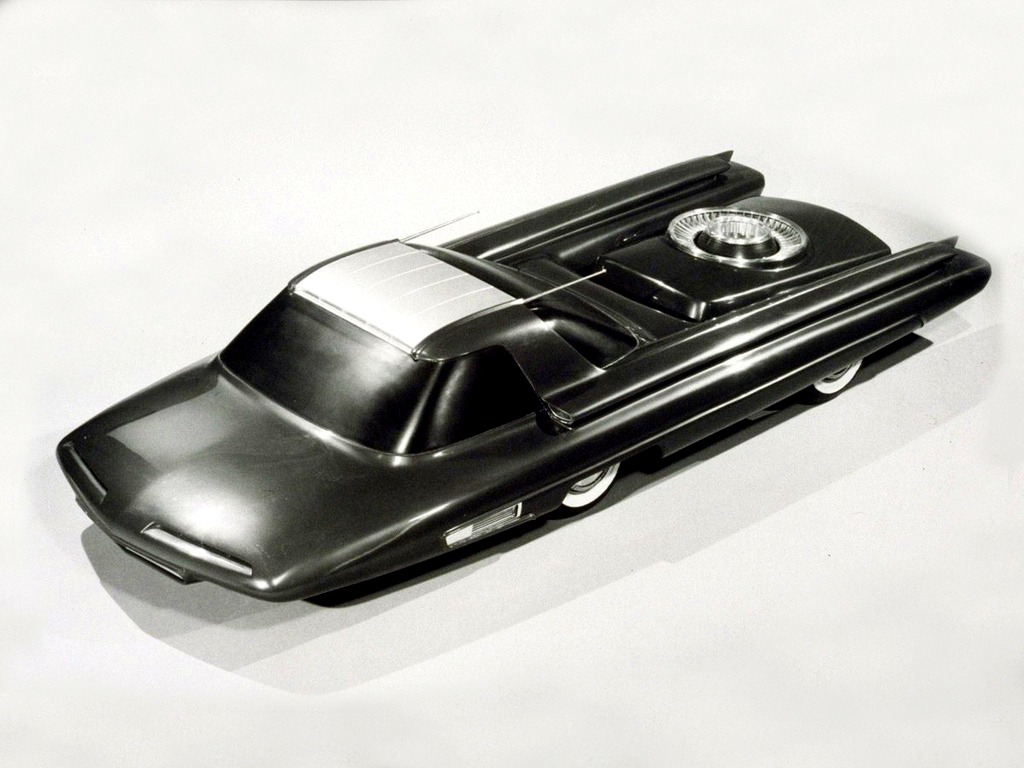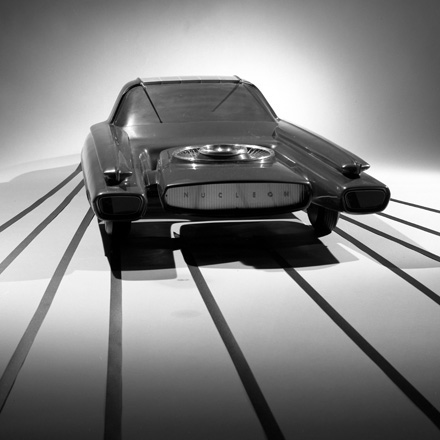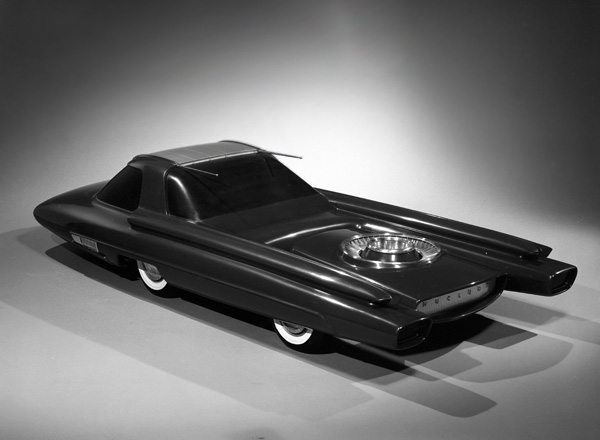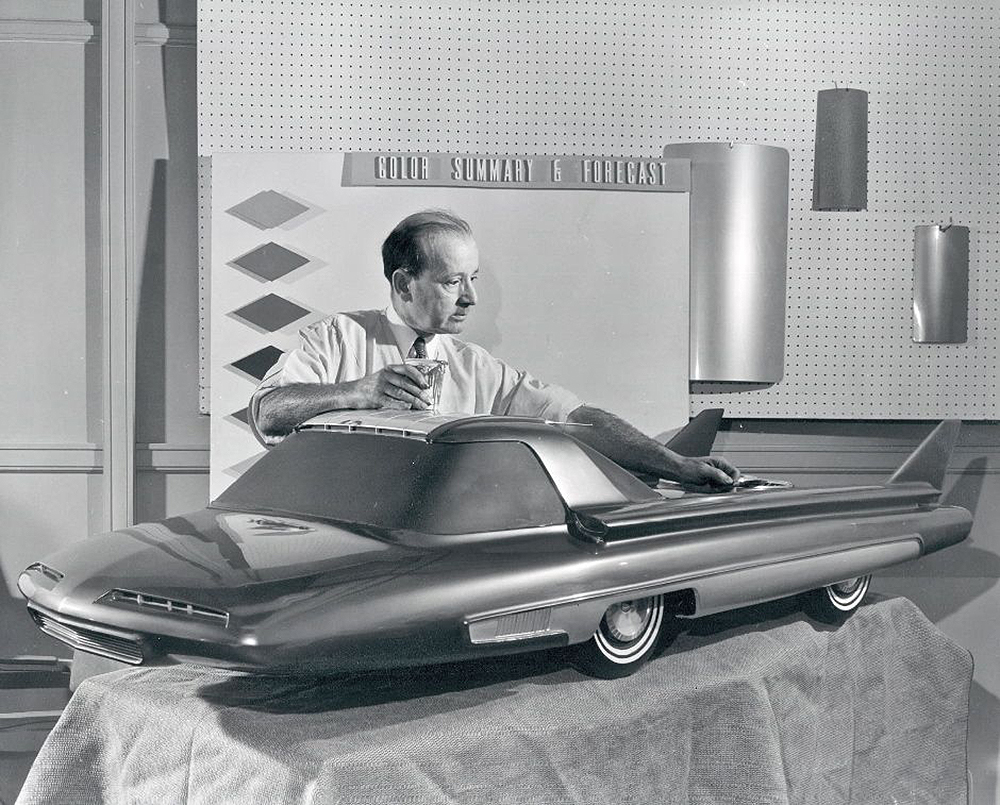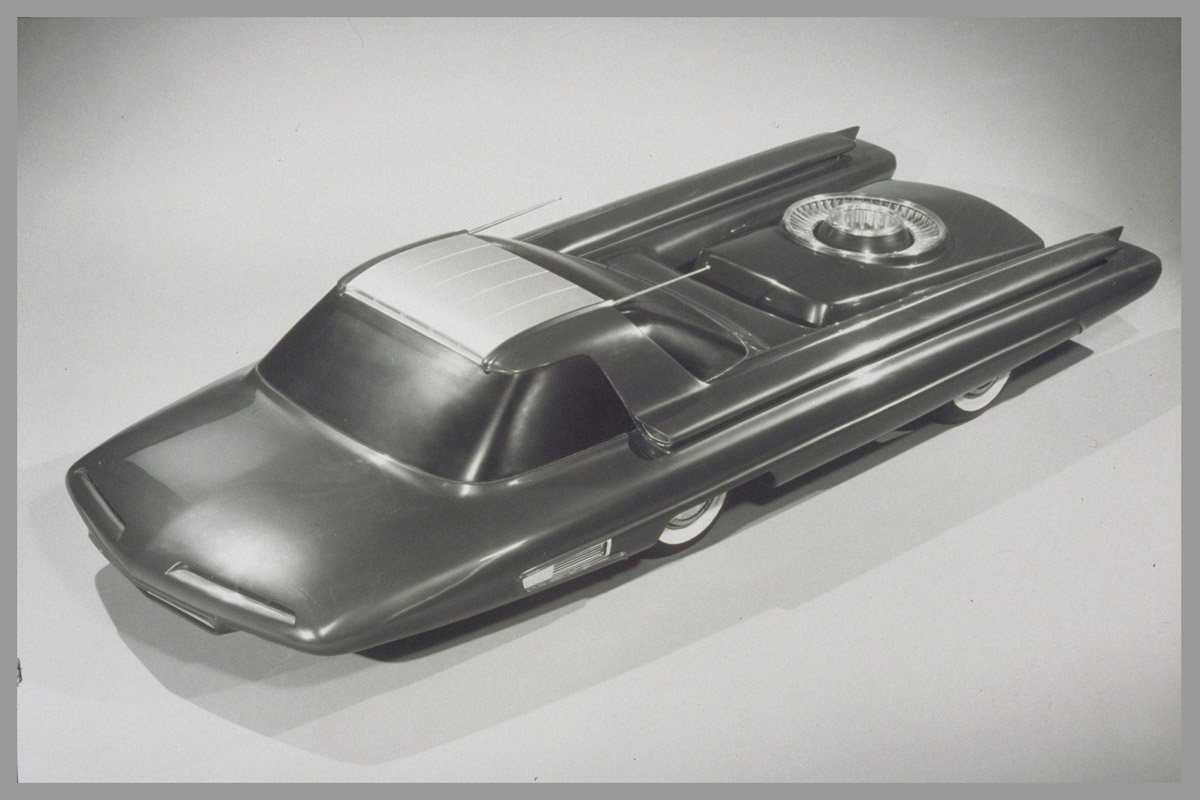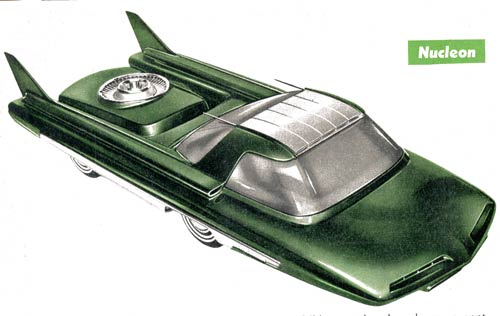The Nucleon, a 3/8-scale model, provided a glimpse into the atomic-powered future. Designed on the assumption that the present bulkiness and weight of nuclear reactors and attendant shielding would some day be reduced, the Nucleon was intended to probe possible design influence of atomic power in automobiles.
The model featured a power capsule suspended between twin booms at the rear. The capsule, which would contain a radioactive core for motive power, would be easily interchangeable at the driver’s option, according to performance needs and the distance to be traveled.
The drive train would be part of the power package, and electronic torque converters might take the place of the drive-train used at the time. Cars like the Nucleon might be able to travel 5,000 miles or more, depending on the size of the core, without recharging. At that time, they would be taken to a charging station, which research designers envisioned as largely replacing gas stations.
The passenger compartment of the Nucleon featured a one-piece, pillar-less windshield and compound rear window, and was topped by a cantilever roof. There were air intakes at the leading edge of the roof and at the base of its supports.
Cars such as the Nucleon illustrate the extent to which research into the future was conducted at Ford, and demonstrate the designer’s unwillingness to admit that a thing cannot be done simply because it has not been done.

